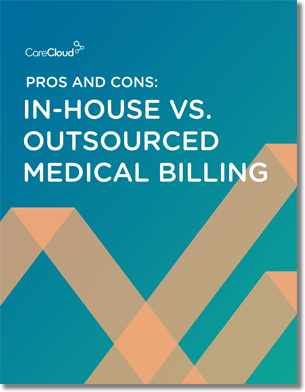Urgent care centers have become integral in providing efficient and timely healthcare services, handling millions of patient visits annually. However, the backbone of these centers – medical billing and coding – often faces challenges that can impact the overall efficiency and profitability of the practice. This guide will explore the crucial aspects of urgent care billing and coding, providing insights and tips to ensure accurate reimbursement and streamlined operations.
Understanding Urgent Care Coding Guidelines
The coding and reporting guidelines for urgent care centers are rooted in the International Classification of Disease, Procedure Coding Systems (ICD-10-PCS). Adhering to these guidelines, especially those outlined in the Health Insurance Portability and Accountability Act (HIPAA), is paramount for accurate coding of medical services.
Updates in Evaluation and Management (E/M) Codes
E/M codes play a crucial role in depicting the level of care provided by healthcare providers. CMS has introduced updates, emphasizing “Electronic Claim Submission” to streamline the claim submission process. The revised Place of Service (POS) code for urgent care centers (code 20) directly impacts coding and billing practices.
Navigating Precise Aspects of Urgent Care Coding
Understanding the ICD-10-PCS codes with their seven characters is vital for accurate coding. Biopsy and bypass procedures require specific coding techniques, and while history and exams are no longer used for E/M services, they remain essential for CPT codes 99202-99215. The shift from face-to-face to total time spent with the patient marks a significant change in E/M code selection.
Urgent Care Billing Process Know-How
The urgent care billing process begins at the front door, with clinical receptionists collecting crucial patient data during pre-registration. Electronic Health Records (EHR) are pivotal in inefficient patient record management, ensuring smooth operations within urgent care facilities.
Optimizing the billing and coding process is essential for increasing revenue while reducing expenses associated with high-cost collection procedures. CareCloud recommends outsourcing urgent care medical coding and billing for a more efficient alternative to in-house management.
Exclusive ‘S’ Codes for Urgent Care Facilities
Urgent care facilities rely on designated Healthcare Common Procedure Coding System (HCPCS) codes, identified with the distinctive prefix ‘S,’ including S9088 and S9083. These codes play a pivotal role in facilitating billing processes for evaluating and treating medical conditions. S9088 specifically addresses the reimbursement for urgent care services, requiring appropriate pairing with an Evaluation and Management (E/M) code.
On the other hand, S9083 covers fees for services provided, irrespective of the patient’s treatment. These ‘S’ codes ensure accurate and comprehensive Urgent Care billing for various medical services.
Urgent Care CPT Codes Category
Category 1 CPT codes are central to urgent care billing, covering many healthcare services. Category 2 CPT codes are optional performance measurement tools, providing an extra layer of quality assurance. Category 3 CPT codes for emerging technologies are less commonly utilized in urgent care facilities.
Common Urgent Care CPT Codes
Frequently employed in urgent care settings, codes such as 99214, 99213, and 99204, falling under Category 1 of the Current Procedural Terminology (CPT), play a pivotal role in facilitating precise billing for diverse patient encounters. These codes provide a systematic approach for evaluating and managing patients in urgent care, ensuring an accurate representation of the care provided.
By utilizing these Category 1 CPT codes, urgent care facilities can efficiently streamline their operational processes, contributing to an effective and standardized billing system that aligns with the scope and complexity of the services rendered during various patient interactions.
Understanding the Urgent Care Billing Process
When a patient steps into an urgent care facility, the billing process hinges on the medical staff’s meticulous recording of crucial patient information. To ensure a well-optimized billing workflow, urgent care facilities prioritize key components. Implementing an Electronic Health Records (EHR) solution enhances efficiency by minimizing manual data entry while verifying insurance coverage upfront and preventing claim denials.
Staff training on industry best practices enhances accuracy and customer service. Regular audits are integral, allowing for the identification of potential issues and areas of improvement. Together, these components form the foundation of a streamlined and effective urgent care billing process.
Streamlining Urgent Care Billing
Implementing an EHR system significantly streamlines the urgent care billing process, reducing manual data entry and improving accuracy. Verifying insurance coverage, training staff, regular audits, and outsourcing billing to professional companies contribute to a well-optimized and efficient billing process.
Conclusion
Understanding urgent care billing and coding guidelines is crucial for the financial health of these facilities. By staying abreast of the latest updates, implementing efficient processes, and leveraging external expertise, urgent care centers can ensure accurate reimbursement, streamline operations, and focus on delivering quality patient care. Unlock the code to success in urgent care billing with CareCloud.



